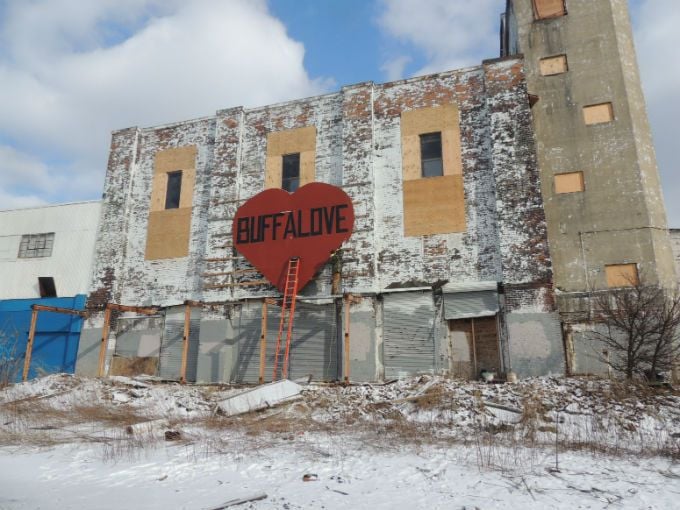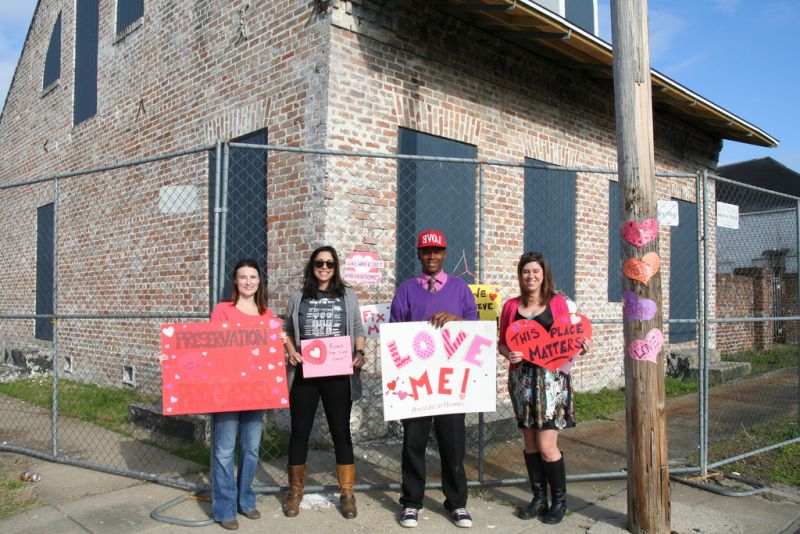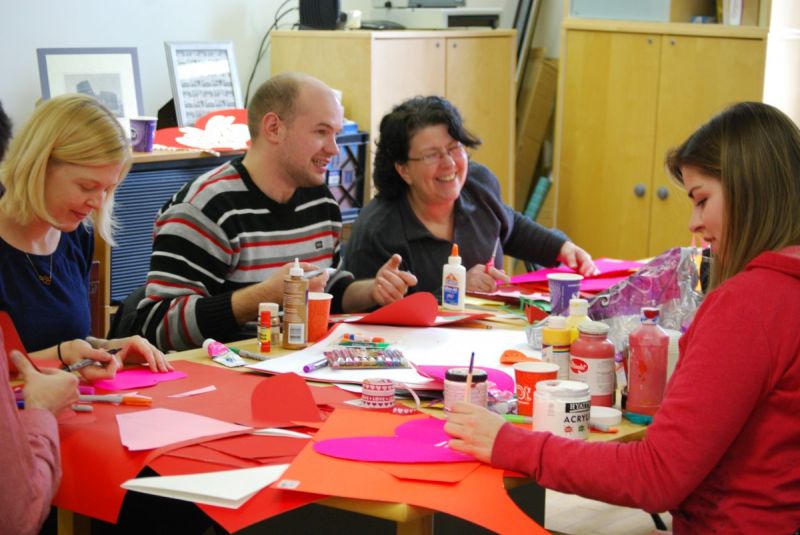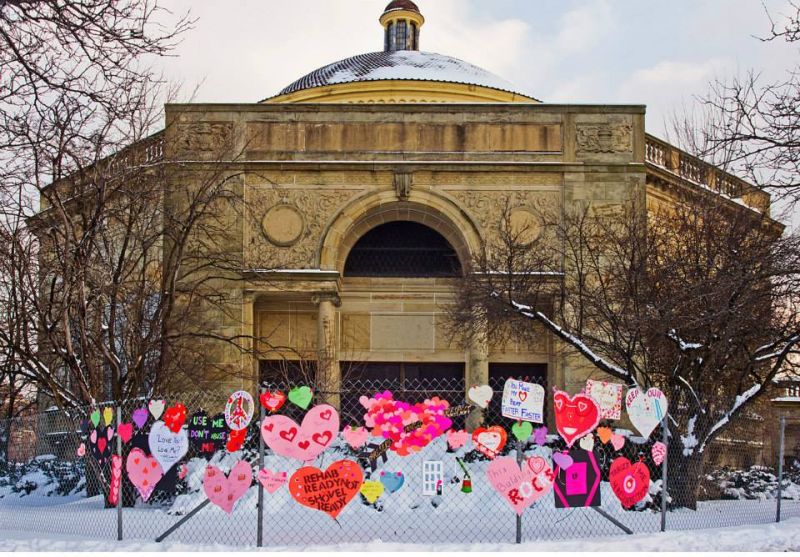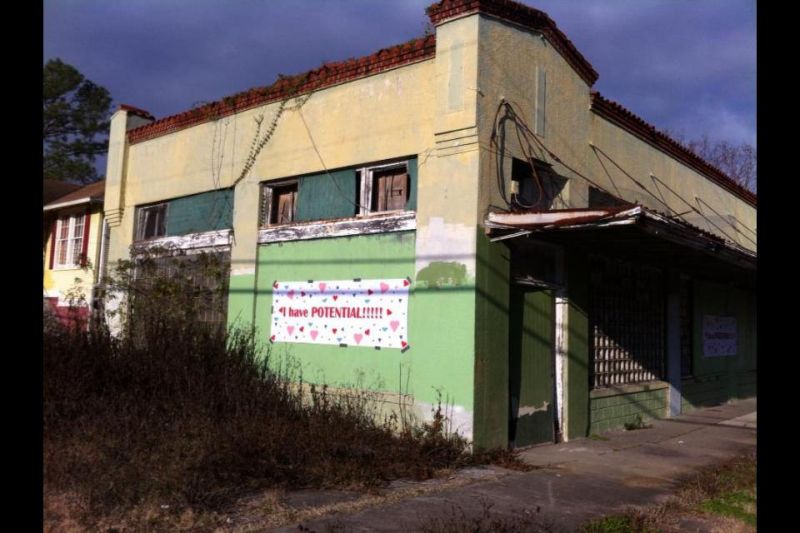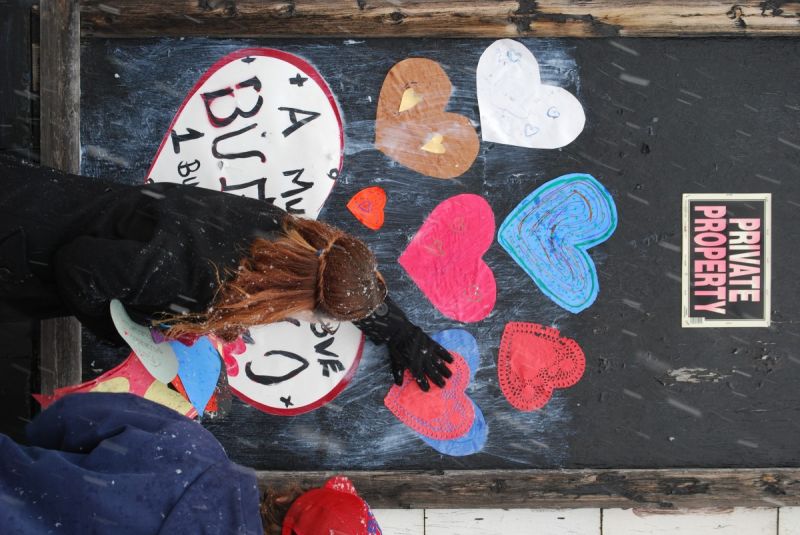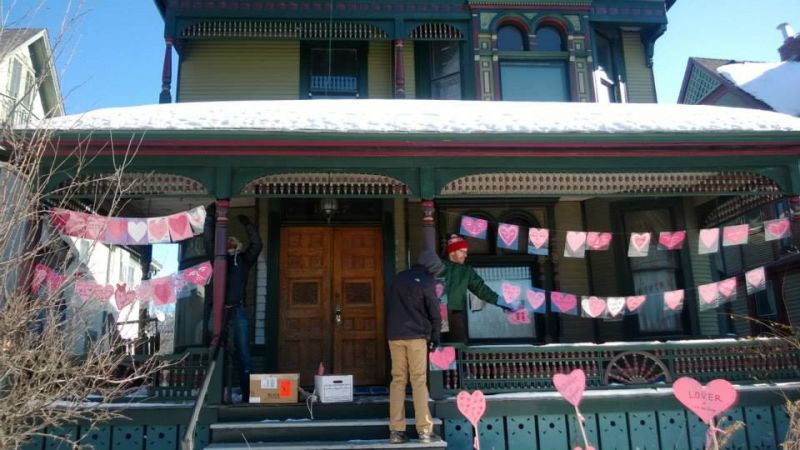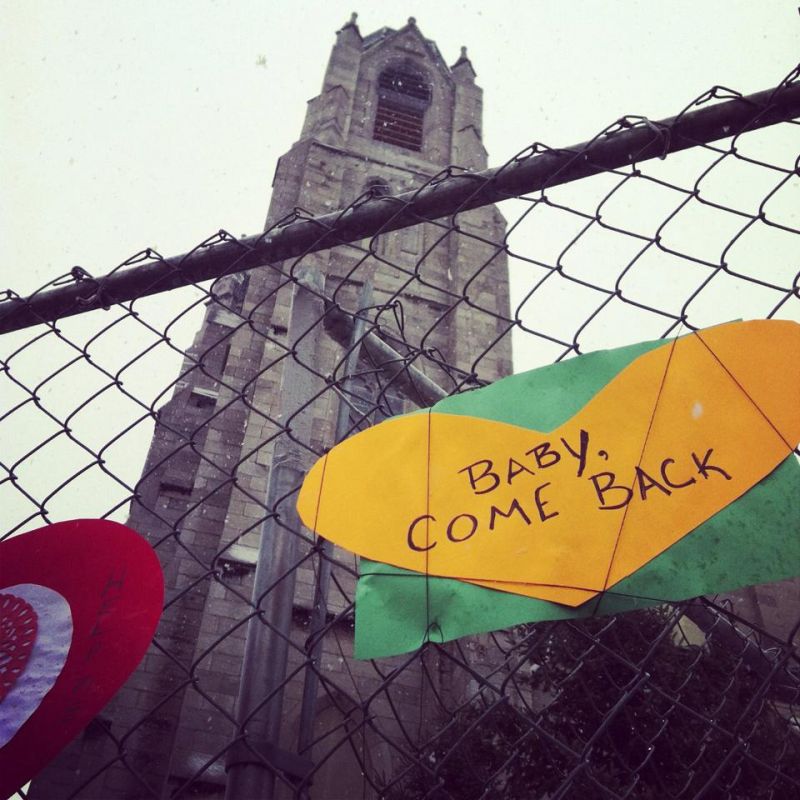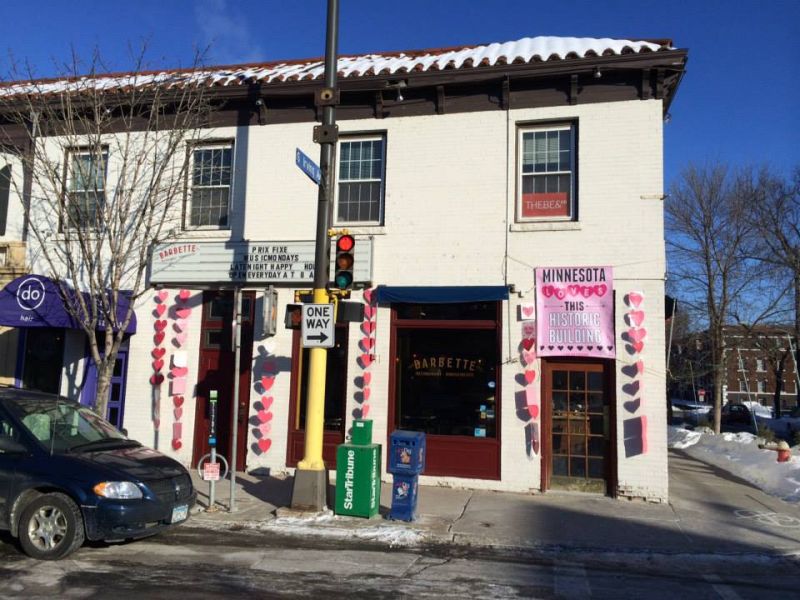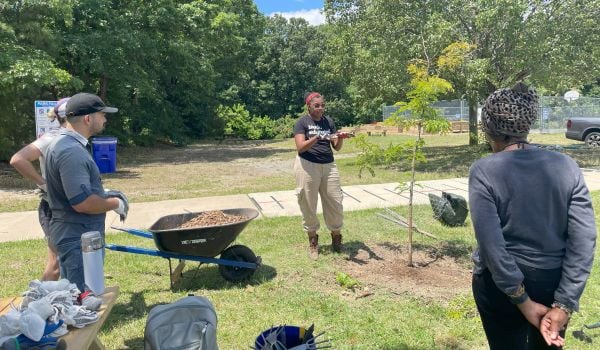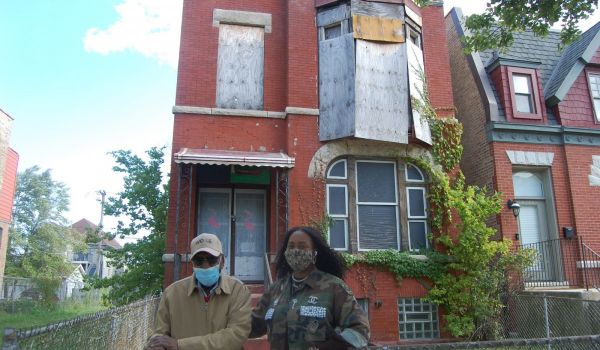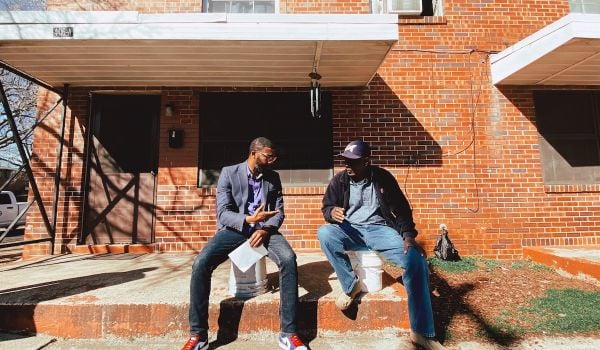If you think preservationists are out hugging buildings this time of year, you are wrong. Preservationists across the nation have spent this week bombing buildings — with glittery paper hearts containing positive messages about reuse and playfulness. The idea behind these “heart bombs” is to raise awareness of the potential for vacant buildings while making advocacy visible and accessible.
Heart bombing joins the forces of historic preservation and blight removal, which sometimes appear at odds. Creatively suggesting new uses for vacant buildings, heart bombs craft a new narrative for historic properties based on a declared shared future. The heart-bomb message transforms “we should save this building” into “we will reuse this building,” moving from passive opposition to active participation.
This year, heart bombs went off in St. Paul, Cleveland, New Orleans, Wheeling, W.Va. and Buffalo, N.Y., where they started in 2012 on Valentine’s Day. That year, Bernice Radle created the first heart bomb event for Buffalo’s Young Preservationists (BYP) after her fiancé Jason Wilson, director of operations at Preservation Buffalo Niagara, had put a bow around a vacant house slated for demolition at Christmas. Wilson’s gesture inspired what now has become a growing annual affair for preservationists.
Yet heart bombs are not just public art. Radle makes it clear that the buildings receiving adoration also get real attention. “When a building gets a heart,” she says, “it also gets our heart.”
According to Radle, each year the heart bomb team selects from a list of four or five buildings that it commits to actually steering toward rehabilitation. BYP has narrowed the selection from the first year to ensure it chooses a feasible workload for follow-up advocacy, meetings and owner-hunting. The team does not release its list of targets ahead of the bombings, and property owners don’t get notification until they read the news.
Buffalo’s track record already demonstrates success. Only one bombed building has met the bulldozer, and several are being rehabilitated. Local and national media attention has amplified the event and taken it viral. Within a year, heart bomb campaigns had sprung up in Wheeling and Cedar Rapids, Iowa. The National Trust for Historic Preservation, not often seen stocking up on glitter, heart bombed every Texas courthouse. This year other cities joined in, and Radle sent out a call to her national network.
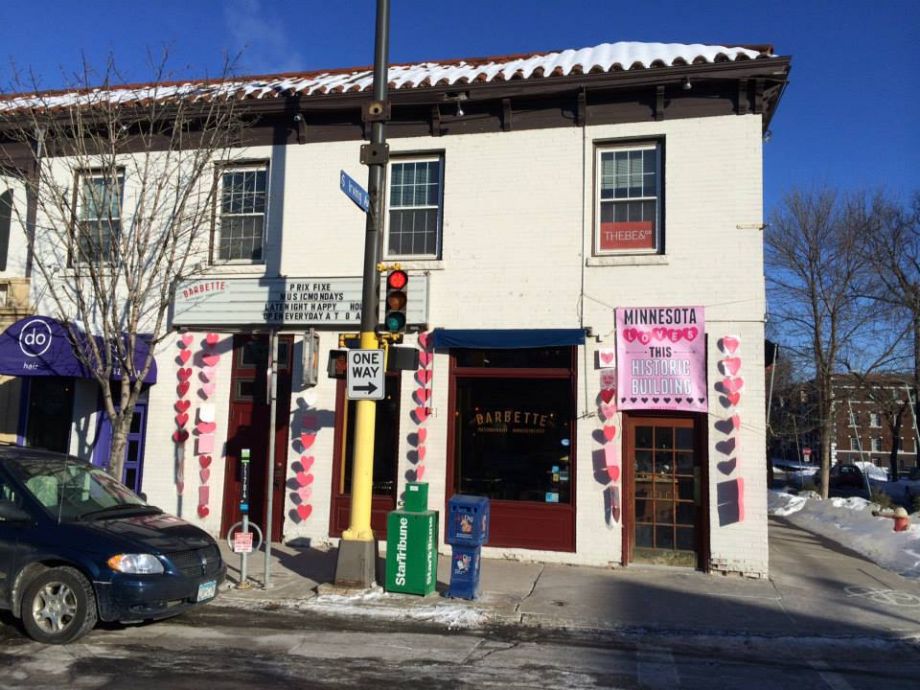
Heart bombing in Uptown Minneapolis. Credit: The Preservation Alliance of Minnesota
Beyond numbers of buildings and cities, heart bombing’s biggest impact has been showing that preservation advocacy can be cheerful, inclusive and future-focused. Campaigns often are rear-guard, launched after a threat to a building emerges. BYP has shown that preservationists can dare to publicly dream about a building’s future, creating support around narratives that look forward without having to cast a villain.
While building a new narrative, focusing on vacant property pushes preservationists to look at the contexts that create abandonment. BYP members confronted why buildings become and remain vacant, including the sobering fact that sometimes communities simply don’t want their buildings anymore. Preservationists can develop more realistic expectations and better ideas by understanding the complexity posed by blight and real estate economics.
Heart bombing also has drawn more people to the preservation cause. Preservationists widely admit to an image problem, but here they have a chance to step away from stereotypes. “I think the biggest thing the heart bomb campaign has done is show how easy it actual can be to get involved in preservation,” says BYP board member Derek King.
Radle, 27, points out that heart bombing reaches the fabled millennial demographic, which preservationists know they must engage to keep the movement strong in the future. “We are all about making change in our communities, doing things that matter and we thrive on innovation, she says. “Heart bombs [are] simple, heart-warming and pretty effective. It’s resourceful, just like millennials are.”
Young preservation energy seems to be on the rise, but it may go by other names. Perhaps younger voices won’t even use the word “preservation” to describe their work. Indeed, in a January interview on the National Trust’s Preservation Nation, 28-year-old Sara Delgadillo said that many young preservationists “may not know they are practicing preservation.”
Whatever name preservationists take in the future, heart bombing offers valuable lessons. Its organizers hope to see it become a year-round activity. Advocates need to develop ongoing strategies that provide real support to people trying to resuscitate vacant buildings. The work ahead could be hard, but it needs to remain engaging and participatory as well. While conventional wisdom holds that Valentine’s Day is a bad time to start a long-term relationship, heart bombers are showing that need not be true.
Here’s a look at the week’s best “heart bombs.”
Gallery: “Heart Bombing” Around the Country

Michael R. Allen is the founder and director of the Preservation Research Office and a lecturer in American Culture Studies at Washington University in St. Louis. His writing on historic preservation, architectural history and public art has appeared in the St. Louis Post-Dispatch, Temporary Art Review, PreservationNation, nextSTL and other outlets.

